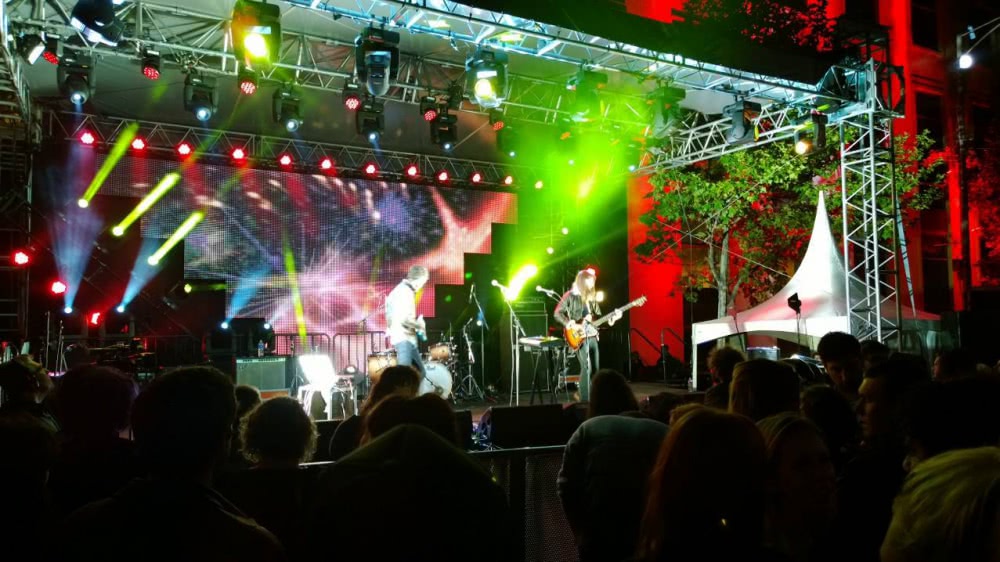Following the huge crowd numbers of the second edition of all-night arts festival White Night Melbourne, the State Government is looking to expand the event for next year.
Over half a million people turned out over the weekend, exceeding the figure of 300,000 from the debut 2012 White Night, leading the Government to contemplate extending the event across a greater area of the city or even staging it across two nights to accommodate the growing numbers it attracts.
But despite the event’s attendance success, with over 550,000 people turning out to catch White Night’s multitude of live music, art installations, and public events, the massive crowds brought with it congested foot traffic, long queues for curated events, and passengers jammed like sardines into late-night trains and trams.
Premier Denis Napthine has acknowledged the logistical issues, which the State Government plans to address for 2015 by possibly extending White Night past the borders of the CBD or even turning it into the proverbial ‘White Weekend’ over two 7pm-7am nights, as ABC News reports. “There’s some issues we’ll address in terms of better movement of people, and also better management of transport.”
“Crowding around Flinders Street was an issue, we need to manage the public transport better, spread people out opening more stations, longer hours,” said Premier Napthine. “We’ll continue to grow White Night, but we’ll also look at opportunities to expand the footprint, look at other options for people to participate.”
The wide array of events on offer in the White Night Melbourne 2014 programme included musical-themed events like the outdoor Jazz and Rhythm N’ Blues stage at Bourke Street Mall, a live broadcast by community radio station RRR held at the NGV, and the Northern Lights Music Stage.
Located behind the State Library, relocated away from last year’s massive Flinders Street Station stage, the live music stage better managed crowds in a lineup that focussed on emerging bands and more cult-like independent acts, featuring sets from Client Liaison, Beaches, The Murlocs, Lost Animal, and a 6am slot from Fraser A. Gorman.
Lost Animal performing at the Northern Lights Stage (Photo: White Night Melbourne. Source: Facebook)
Love Music?
Get your daily dose of metal, rock, indie, pop, and everything else in between.
White night festival Melbourne! pic.twitter.com/yfbwnt4eOW
— Ryan Murphy (@murphs_ryan69) February 23, 2014
Referring to the crowd management concerns and overcrowded public transport, the Premier remarked, “there’s some issues we’ll address in terms of better movement of people, and also better management of transport.”
While Victoria Police praised the behaviour of the massive crowds, attracted by the bevy of arts, music, theatre, film, and street art that transformed the Melbourne CBD’s most iconic scenery and landmarks, social media told a slightly different story.
Many complained on the event’s Facebook about the long queues to attend attractions in the White Night Melbourne programme. Lines stretched around the block for ‘Purple Rain’, an interactive audio-video installation inspired by Prince’s blockbuster album and movie of the same name, with others experiencing delays of half-an-hour or more to get inside exhibitions held at the State Library, NGV, ACMI, and the RMIT-hosted on, Melbourne, Music + Me.
Other Melburnians voiced concerns over the shoulder-to-shoulder bustle in city intersections, particularly the crush of Flinders Street Station and Federation Square, or the free public transport provided.
The additional 370 train and tram services provided were still insufficient to cope with the White Night Melbourne throng, says Public Transport Users Association President Tony Morton.
“It’s really unfortunate that we have a successful event like this but it gets let down by the quality of our public transport service,” Mr Morton said.
Outbound trains departing from the city only began running after 1:00am, which Mr Morton criticised as “a bit peculiar,” but Public Transport Victoria tells ABC News the decision was made on the assumption that most would already be in the city and trying to leave. A statement explaining: “The only way we could efficiently provide a 30-minute service frequency from the city is to bring trains quickly back from the outer suburbs.”

































